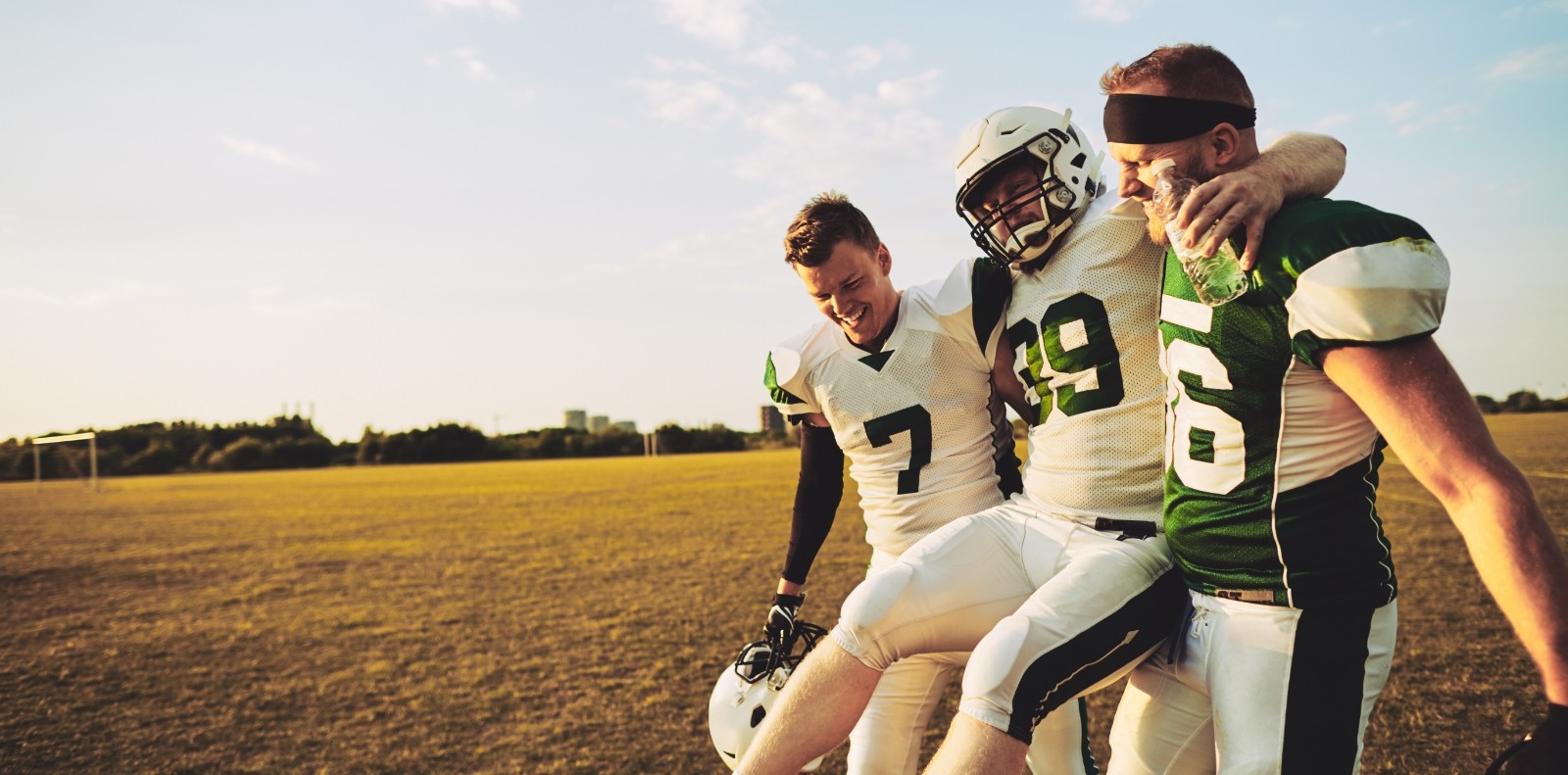Top Tips from Your Sports Medicine Doctor on Prevention and How to Handle an Injury
With football season underway, now is an opportune time to review some of the most common sports-related injuries that can occur while playing the game. Although football is one of our great American pastimes, it can’t be ignored that the sport is closely associated with high rates of concussions, traumatic brain injuries, and all varieties of orthopedic injuries that range in severity. Many football injuries require the attention of someone who specializes in orthopedic sports medicine, an athletic trainer, or an orthopedic knee surgeon.
So, why exactly is football such a dangerous sport? What differentiates it from other sports that are considered high-intensity?
Football is one of the few sports where there is significant body-to-body contact literally every play. According to the most recent statistics reported by Injury Claim Coach, their researchers estimated that upwards of 455,000 high school football players were injured in a single year. To cite an additional source, the NFL reported that in 2021 71 of their players incurred ACL tears while another 128 players incurred MCL tears.
Whether you’re playing at the high school, collegiate, or professional level, all football players run the risk of getting injured. Keeping that in mind, we’re going to review some of the most common football-related injuries, what their symptoms are, and when is the best time to reach out to a sports medicine doctor, athletic trainer, or orthopedic knee surgeon.
Ankle Sprain
An ankle sprain is one of the most common injuries in football due to the amount of running and the frequency of hits that take place at the legs. Defensive players are specifically trained to get low while hitting, which is why knee and ankle injuries are so prevalent in football.
An ankle sprain is when the ligaments in the ankle tear. The main symptoms of an ankle sprain are pain, swelling, and the inability to put full weight on the ankle. There are three types of ankle sprains: lateral (from rolling inward), medial (from rolling outward), and high (top of ankle). Contact your local sports medicine doctor in Wichita if you incur an ankle injury.
The best way to prevent ankle sprains is by using proper technique when running and by wearing shoes and equipment that offer the ankle proper support and protection. Of course, avoiding blunt force trauma should also be part of your best practices when playing football. For professional assistance preventing sports injuries, speak with our athletic trainers here at Mid-America Orthopedics.
Knee Injuries
Knee injuries are another incredibly common type of football injury due to the amount of running that’s required of players and the frequent hits that take place below the waist. The following are the three most common types of knee injury: ACL (anterior cruciate ligament) tear, MCL (medial collateral ligament) sprain, and meniscus tear.
Each of these injuries will immediately put a player out of the game. However, since everyone’s knee injuries are unique, the best way to get an idea of the severity of the injury is by making an appointment with an orthopedic doctor or look for sports medicine near you. A sports medicine doctor is specially trained in diagnosing knee problems and other injuries related to sports. In the event that the knee injury requires surgery, they will refer you over to an orthopedic knee surgeon to discuss your treatment options.
Shoulder Dislocation
The shoulder is a high impact area during regular play due to the amount of hitting and hard falls. The quarterback is especially vulnerable because they have the additional responsibility of throwing, which is why many at that position develop shoulder problems. Throwing also opens the quarterback’s upper body to take hard hits. Former Lions quarterback Matthew Stafford famously took a shot back in 2009 that separated his non-throwing shoulder while playing the Browns. He missed five games because of it.
Although football pads offer a lot of protection, they still allow for the shoulder to incur the impact of getting hit. For those that suffer a dislocated shoulder, you should immediately stop playing and seek the treatment of a sports medicine doctor.
Wrist and Hand Injuries
Wrist and hand injuries are another commonality when playing football. This is due to how much contact and blunt force is incurred in these areas during regular gameplay. The most common injuries to that area include wrist sprains, thumb sprains, wrist fractures, hand fractures, and dislocations of the PIP joint. Offensive linemen are especially vulnerable to wrist and hand injuries because most of their technique involves using their hands. Additionally, many players incur hand and wrist injuries by getting stepped on or by attempting to brace themselves when falling hard.
Most football players tape their wrists and fingers to prevent injuries to their hands and wrists. Some even use protective gloves or other equipment that provides padding and stability. Those that are suffering with a hand and/or wrist injury are encouraged to contact a sports medicine doctor to get checked out.
Contact a Sports Medicine Doctor Near You for a Professional Examination of Your Injury
If you have been searching for sports medicine near you for yourself or your student athlete, contact the experts at Mid-America Orthopedics. We have a full staff of sports medicine doctors who specialize in football-related injuries and pain management. We also have a full staff of athletic trainers who regularly work with football players on preventing common injuries.
However, we do realize that football is a dangerous game and serious injuries do happen, regardless of how well prepared you are. Our orthopedic knee surgeons have an established track record of working with football players who have incurred ACL, MCL, and meniscus tears. Additionally, Mid-America Orthopedics offers professional physical therapy so that players have help with pain management and can regain full mobility of their joints.
Contact us by calling (316) 630-9300 or by emailing us directly using the contact form on our website.

